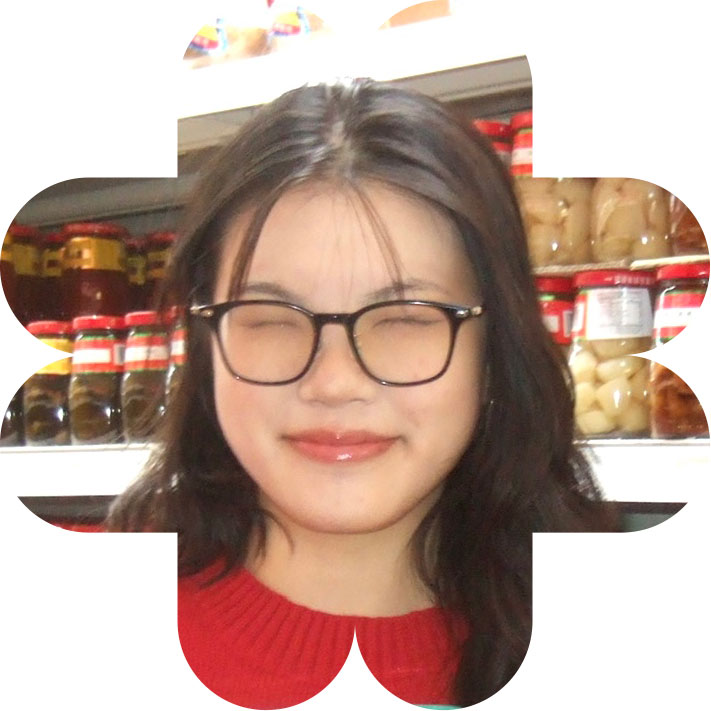
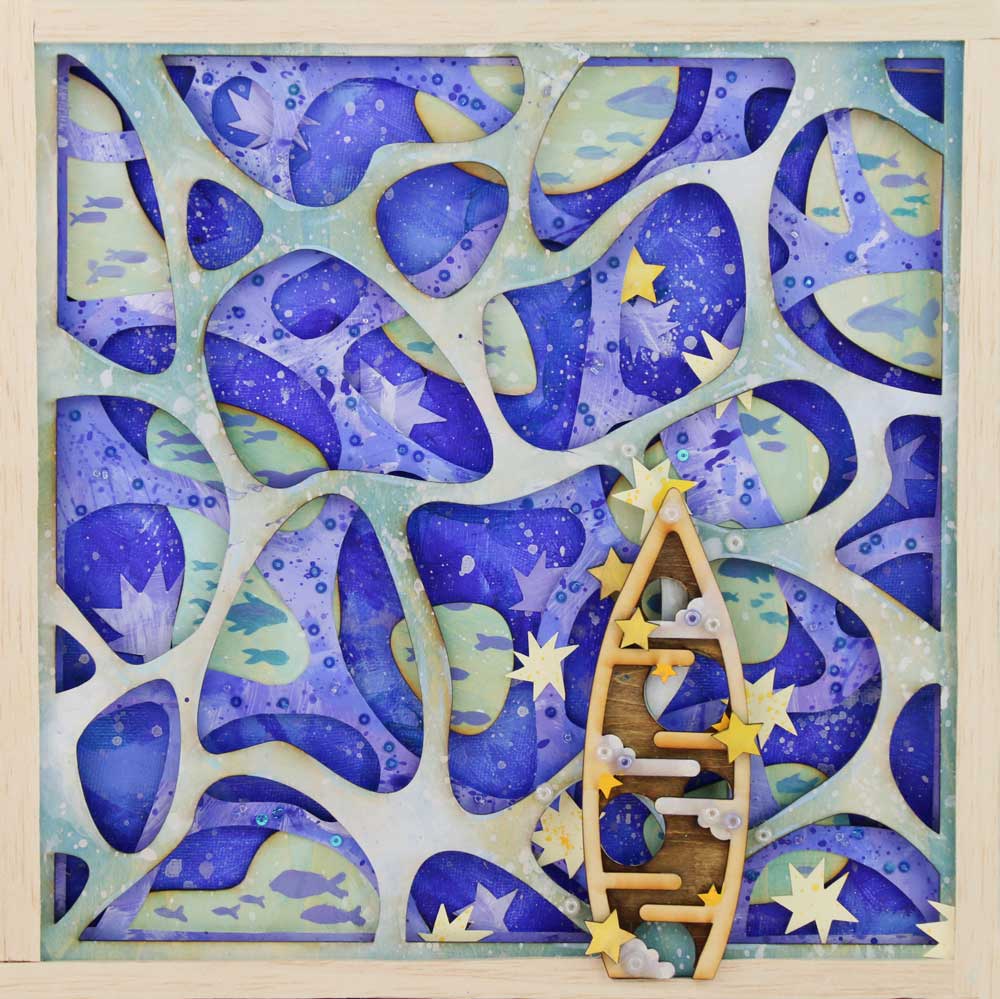
Starry Boat

Height: 10” x Width: 10” x Depth: 0.5” | Idea(s): My initial pieces were mostly flat, consisting of laser-cut wood and acrylic paint | Material(s): Acrylic on cardstock, laser-cut wood, balsa wood, beads, sequins on canvas | Process(es): Laser-cut water texture & boat, layer wood with cardstock, finish with balsa wood frame & sequins | Curatorial Note: A lovely layering of 3D elements to create a whimsical, beautiful bird’s-eye view of a nightscape. Clever use of color, patterns, and repetition to elicit this rhythmic calm and flowy night.
Carys Lam
Student statement
Student statement
How did your art teacher support your artistic development?
Mr. Meyer trusted my artistic intuition and ability to lead heavily in my portfolios. He enabled me to experiment with school materials and stayed patient as I struggled through different ideas. Every class I had with him in previous years prepared me with valuable skills and artistic thinking. I am very grateful to have been taught by him.
What is your advice to other AP Art and Design students?
I found it very helpful to maintain a consistent element throughout the portfolio. Besides the theme, a medium, titling, or technique that flows through the entire portfolio helps the harmony of the pieces. For me, maintaining a laser-cut element and a layering technique created pieces that had individual surprises yet appeared to belong together.
Please describe the context for how the idea for this artwork originated (was this part of your sustained investigation, an independent project, a class assignment, created during a summer study, etc.).
This artwork was part of my sustained investigation, which centered around the clash between man’s creation and the natural world. Utilizing laser-cut forms with imaginative nature, I created 12 vibrant environments where daily objects and transportation are reimagined, thriving and coexisting in their environments.
Your work was selected in part because it achieved synthesis. Can you explain your intentionality in choosing materials and developing processes to further your ideas?
I focused on achieving synthesis by intentionally selecting materials that resonated with my concept. Mixed media not only mirrored the “nature versus man” theme, but it also allowed for me to experiment and incorporate unique materials into each piece. I took great joy in creating the pieces, changing up materials, sizes, and shapes for each to create different scenes of one coherent world. I would say the skeletal theme grounded my pieces together, yet my experimental process allowed for each to be individual and one on its own.

In this portfolio, I explore the clash between man's creations (represented with the clean lines of laser-cut wood) and the natural world, which spirals into fantastical foliage, vines, and greenery from my imagination. In light of declining global nature, I create environments where daily objects and transportation are reimagined, thriving in a world of vibrant nature.
How did your materials and process(es) choices shape the creation or meaning of your artwork(s)?
Due to the traditional and digital techniques, I chose materials that aligned with that clash of fluidity versus structure. The acrylic paint was flexible and unpredictable, while the laser-cut wood was pixel perfect every time. The beads, sequins, and other decorations were manufactured yet each have individual flaws. My chosen piece uses the same materials, laser cut for the boat and free flowing strokes of water.
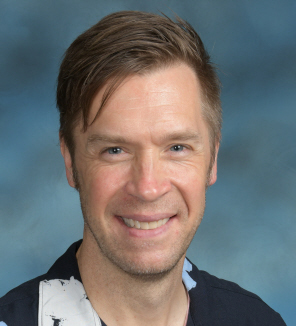
Chris Meyer
Art Teacher
International Christian School, Shek Mun, New Territories, Hong Kong
Teacher statement
Teacher statement
How did you support skill development AND inquiry in the AP Art and Design curriculum?
We offer AP studio as the culmination of the high school art program. Students are only allowed into the class as seniors, and they must have completed at least two full years of art courses leading up to their AP year. Those prerequisites ensure a strong skill set in the media of their choice (whether that is digital, photographic, or traditional media such as painting and drawing). Many of our AP students have taken three full years of art courses before their senior year. While inquiry mainly begins in the AP year (prior years are more standard teacher-given assignments), we do offer opportunities in level 2 and 3 art courses for students to take more ownership into their planning and projects. They often have a choice between project options and/or media, which begins to train them to think for themselves what they want to create. Carys was on an art pathway right away in grade nine, taking an art course every semester throughout high school.
How did you structure practice, experimentation, and revision into your AP Art and Design curriculum?
Carys actually completed two AP studio art portfolios. The first was a drawing portfolio featuring realistic acrylic portraits, but on her 2D design portfolio, she wanted to be more experimental. A project during her junior year had led her to experiment with the laser cutter to create wooden pieces added into a painting, and this in turn led to her idea of incorporating layers of laser-cut wood with paint, cut paper, and a wide variety of other media into her sustained investigation as a senior. The practice comes from the prerequisites students must take before signing up for AP Studio. In Carys' case, she had three full years of art courses preparing her for AP.
How do you support your students in the Selected Works portfolio component?
Students submit a number of pieces for consideration of the Selected Works component. I review the work with the student to help choose the strongest selection. When possible, we stage a peer review, where a number of students discuss the possibilities in order to determine the strongest set. Because they have multiple art courses prior to the AP year, they have also created a strong body of work that does not come from their sustained investigation. While the sustained investigation pieces can and should be strong, they can also be very similar. Having the option of pulling pieces from other courses that are not from the sustained investigation series gives us more options to choose from.
What formative and summative assessments helped guide your students through your AP Art and Design curriculum?
Over the summer prior to their AP year, students are required to complete a planning book, which is 10 pages, front and back, in a sketchbook documenting ideas in written and visual form. This project is due the first week back at school and informs their sustained investigation. Each of the sustained investigation pieces is accompanied by further documentation of the planning, process, and progress of the work, from initial thumbnail sketches, color and media planning, conceptual writing, and a photographic record of the artwork as it takes shape. Carys's plan book is a thick, vivid record of the AP year, bursting with color swatches, layouts, step-by-step photos, and documentation. She actually donated one of them to the art department when she graduated, and it is on display for current students as an exemplar.
What is your advice to other AP Art and Design teachers?
I would suggest that the AP year begins long before the AP year. Gaining a strong sense of composition and design, and developing a high level of technical skill in at least one medium, is necessary to success, and that starts well before the AP art course. The more art classes students can take in the Pre-AP years, the better they will be and the more smoothly the sustained investigation will run. Pushing AP Studio to the senior year gives them the crucial developmental years of early high school to become skilled—as art teachers, we are teaching a skill! Why wouldn't we want the students to be as prepared as possible when they build their portfolio?
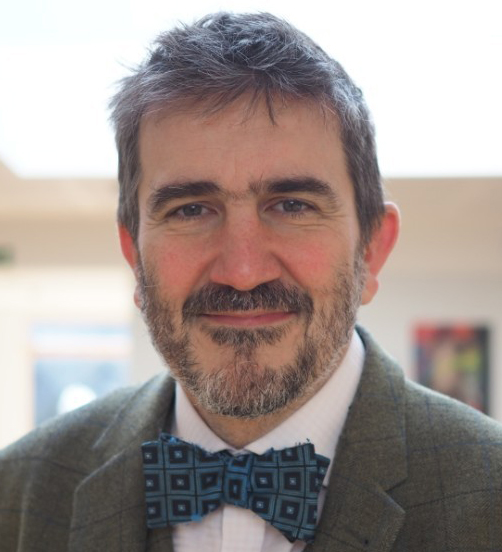
Nicholas Seward
International Christian School, Shek Min, Sha Tin, Hong Kong
Leader statement
Leader statement
What are you most proud of regarding your school’s AP Art and Design program, student, and teacher?
Mr. Meyer has been an institution at ICS over more than two decades, leading a dedicated team of professionals in visual arts. The program has consistently produced outstanding results, with two students last year achieving 100% scores in AP Drawing. Carys is a particularly able and talented young lady whose gifts have flourished here under the tutelage of our faculty.
What do you do to support visual arts programming in your school?
The Visual Arts program begins in kindergarten, with dedicated and well-resourced art facilities provided throughout all divisions of the school. Students begin to specialize in eighth grade, and our scheduling allows for pathways through all four high school grades so that talented artists include visual arts within a holistic liberal arts education.
What is your advice to other school leaders on how to support an AP Art and Design program?
Investing in and supporting excellent faculty is key, alongside a philosophical commitment to the importance of the visual arts. As a Christian school, we believe that great art holds a mirror up to reality, and we see education not as a utilitarian exercise, but an induction into Truth, Goodness, and Beauty.
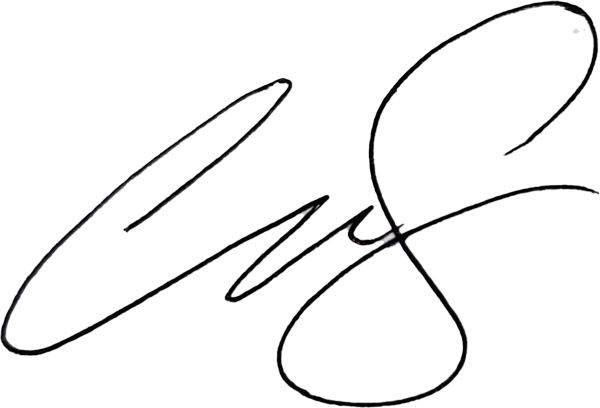
Carys Lam

